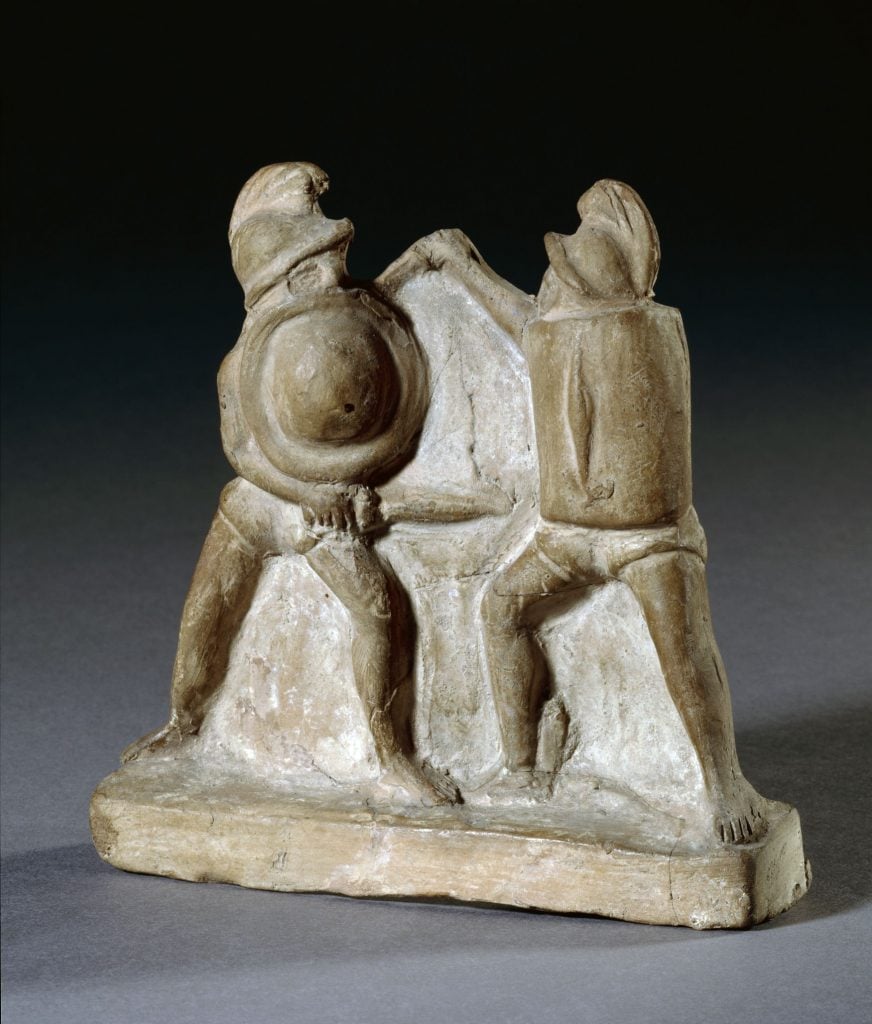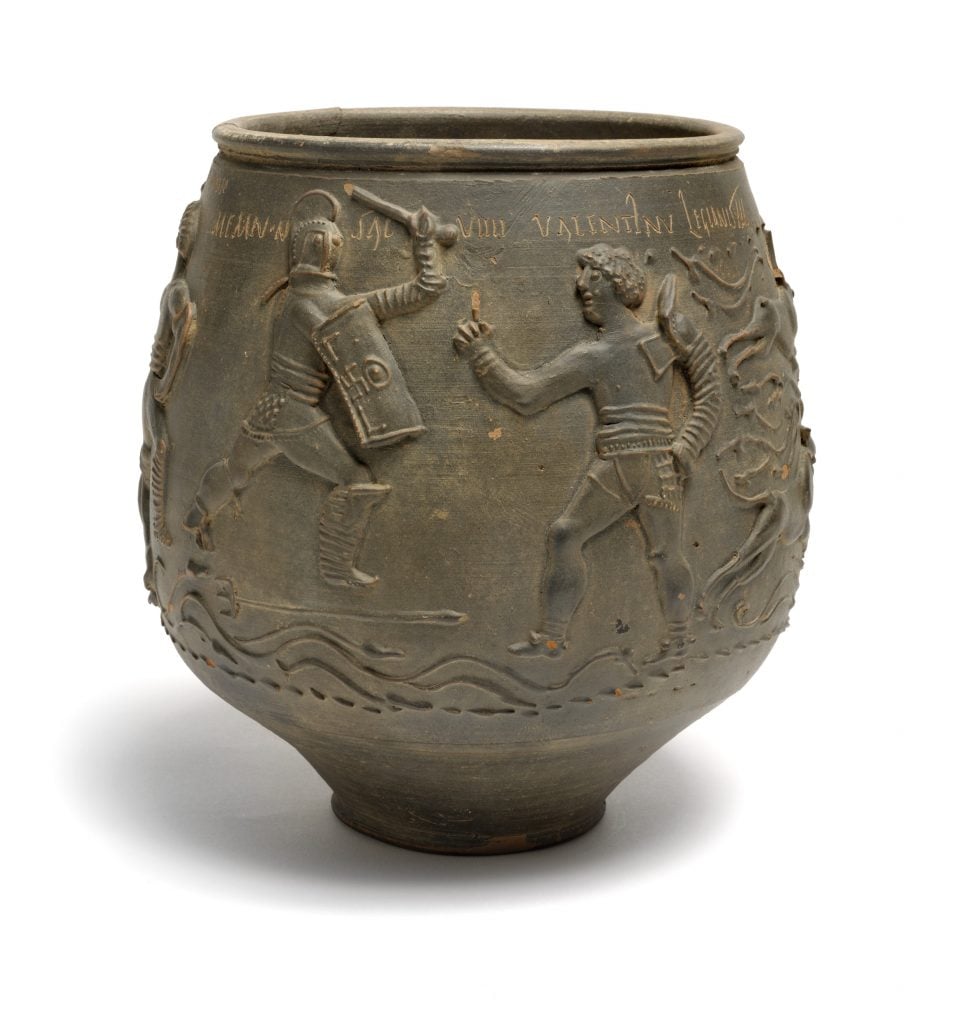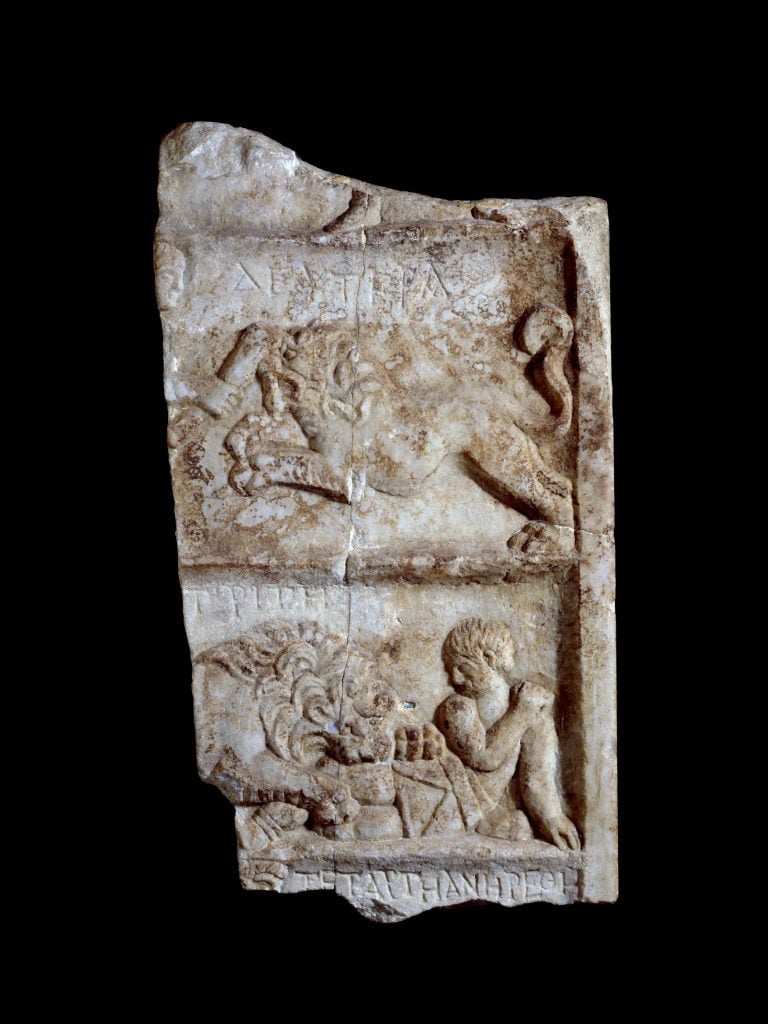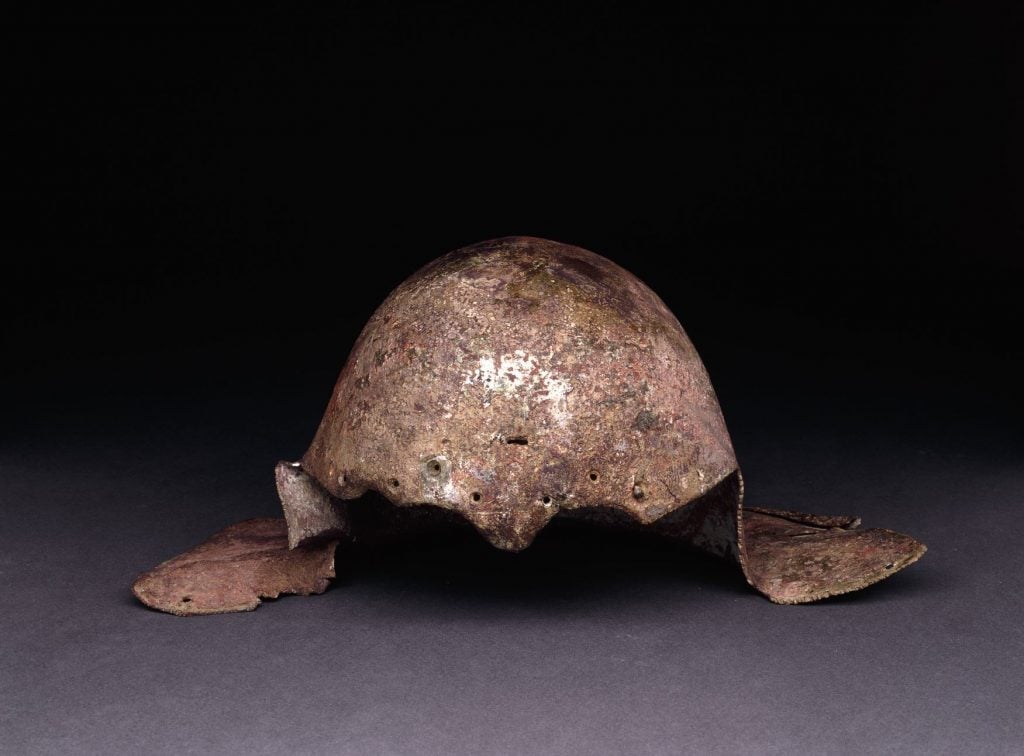Fearsome Roman gladiators dueling for the entertainment of a roaring amphitheater looms large in the cultural imagination, perhaps now more than ever with Ridley Scott’s blockbuster Gladiator sequel, starring Paul Mescal, Pedro Pascal, and Denzel Washington, coming to cinemas this fall.
But who were the gladiators? A major new exhibition “Gladiators of Britain” will use ancient objects to bring to life the violent spectacle of gladiatorial fights while also providing deeper historical insight into the identities of these brave performers. Their social position was uniquely precarious, since they were feted as celebrities yet denied the basic rights of other citizens.

Terracotta gladiators fighting. Photo: The Trustees of the British Museum, © 2024.
The show will tour the U.K., starting at Dorset Museum and Art Gallery in January 2025 before traveling gradually north to Northampton Museum and Art Gallery, Grosvenor Museum in Chester, and finally Tullie House Museum and Art Gallery in Carlisle in early 2026.
At each venue, the show will explore local history specific to that region. For example, a Neolithic henge known as the Maumbury Rings was converted into a Roman amphitheater in Dorset. The U.K.’s largest amphitheater is located in Chester and a trove of ancient treasures that were excavated at the site will go on display.
“Gladiators of Britain” is a British Museum Partnership Exhibition with Colchester + Ipswich Museums, inspired by the success of a recent show, “Gladiators: A Day at the Roman Games,” at Colchester Castle. Long before the rise of Londinium, now known as London, the city of Colchester in Essex was the first capital city of Roman Britain. During its 350-year occupation of Britain, the empire introduced to the isles many aspects of Roman culture including, it appears, tastes in leisure and entertainment.

Colchester Vase. Photo: © Colchester and Ipswich Museum Service – Colchester Collection.
The forthcoming exhibition will feature significant objects from the Colchester Museums collection like the Colchester Vase, from 175 C.E., which depicts a battle between two gladiators with the stage names Memnon and Valentinus. When it was discovered in the 19th century, it provided important proof that gladiatorial combat took place even on the very outskirts the Roman Empire. Another item is a mass-produced glass “sports cup,” also decorated with scenes from the amphitheater.

A marble relief of a Gladiator fighting a lion. Photo: The Trustees of the British Museum, © 2024.
From the British Museum’s collection, the exhibition will feature a 1st–2nd century C.E. marble relief of a so-called venator, the class of gladiator that fought wild beasts, in this case a lion. According to a Greek inscription on the object, the man was “taken away for burial” after the fight.

Hawkedon Helmet. Photo: The Trustees of the British Museum, © 2024.
An extremely rare example of gladiatorial armor found in the U.K., the Hawkedon Helmet, is also being leant by the British Museum. It is thought to have been created on the continent and carried over to Britain, according to new metallurgical research carried out by the University of Reading.
The British Museum’s recent exhibition “Legion: Life in the Roman Army” was a big hit with visitors earlier this year. Will the craze for all things ancient continue?
Follow Artnet News on Facebook:
